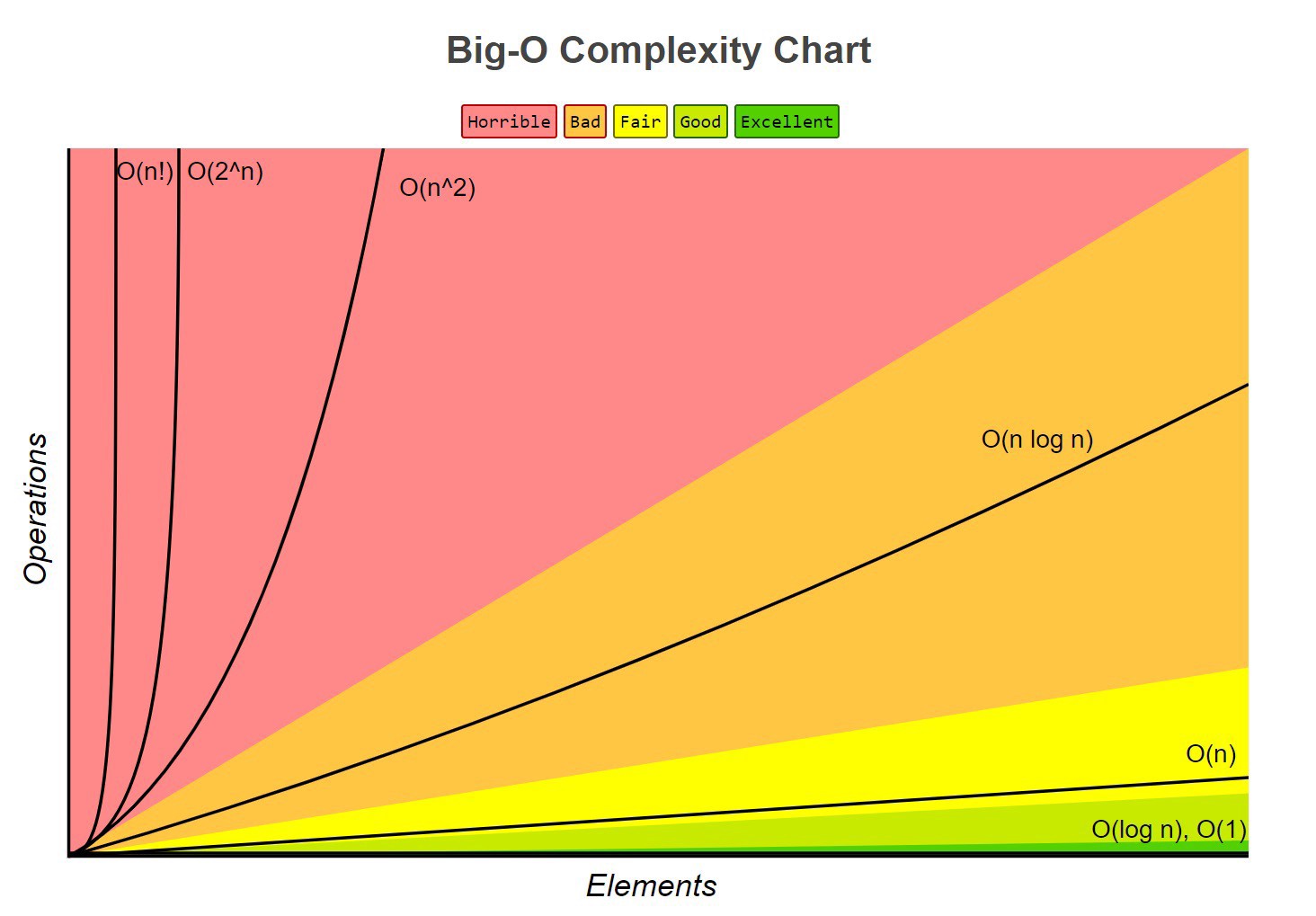
Big O Cheatsheet
A quick guide to identifying runtime complexity
Table of Contents
- Table of Contents
- Constant Time: O(n) = 1
- Logarithmic Time: O(n) = log(n)
- Linear Time: O(n) = n
- Quasilinear Time: O(n) = n*log(n)
- Quadratic Time: O(n) = n^2
- Exponential Time: O(n) = 2^n
Welcome to the Big O cheatsheet! This is meant to be a reference point fo quickly identifying some of the most common runtime complexities. It is generalized, so it is not meant to perfectly classify all complex algorithms, but hopefully it can provide a starting point to jump off from. Without further ado, lets dive in!
Constant Time: O(n) = 1
In order for an algorithm to be constant time, it must take the same amount of time to run no matter what variables are passed in. Whether the algo is passed an array with 1 item or 100 items, it will take the same time to execute.
Logarithmic Time: O(n) = log(n)
If doubling the number of elements you pass your algo doesn’t double the amount of work it has to do, it is likely logarithmic time. Searching operations can usually be assumed to be Logarithmic if the data collection is sorted.
Linear Time: O(n) = n
Linear time is one of the most common runtimes. If you are iterating through every element in a data collection, it is probably going to be linear runtime. This is because for each n number of elements we add to the data collection, be have to do exactly n more work.
Example
A simple loop through a single data collection. Iterating through half the collection would still be O(n)
Quasilinear Time: O(n) = n*log(n)
This is usually the case if each element you add adds an extra unit of work plus a little bit extra. For example, doubling the number of elements would take a little bit more than double the work. A handy rule of thumb is that Sorting algorithms are usually quasilinear.
Quadratic Time: O(n) = n^2
Quadratic time is an option if adding an element greatly increases the amount of work you have to do. Usually this takes place if you add an element, and that element needs to interact with every other element in the collection. For example, if you were to enter a room and have to shake hands with every other person already in that room, that would have a quadratic runtime complexity.
Example
Two nested loops both iterating over the same collection.
Exponential Time: O(n) = 2^n
If you add a single element to your data collection, the amount of work doubles. This is usually considered to be a very bad runtime, and should probably be avoided in final solutions.
Thank you so much for reading! I hope you found this cheatsheet helpful, and good luck on your algorithms!